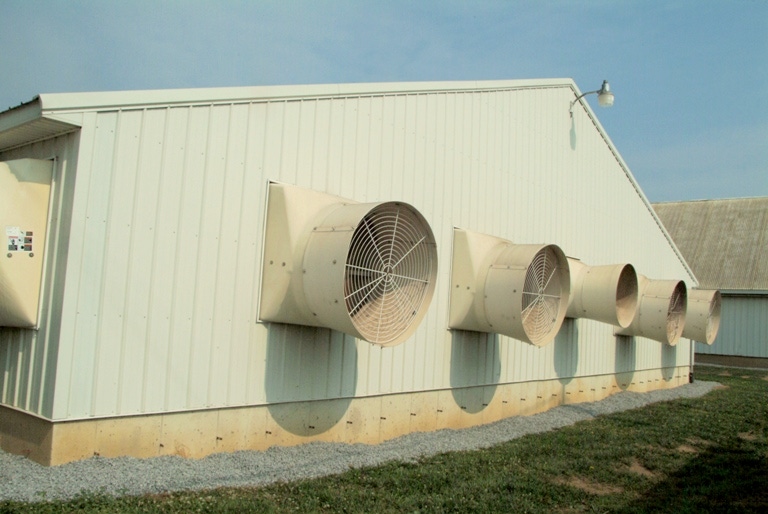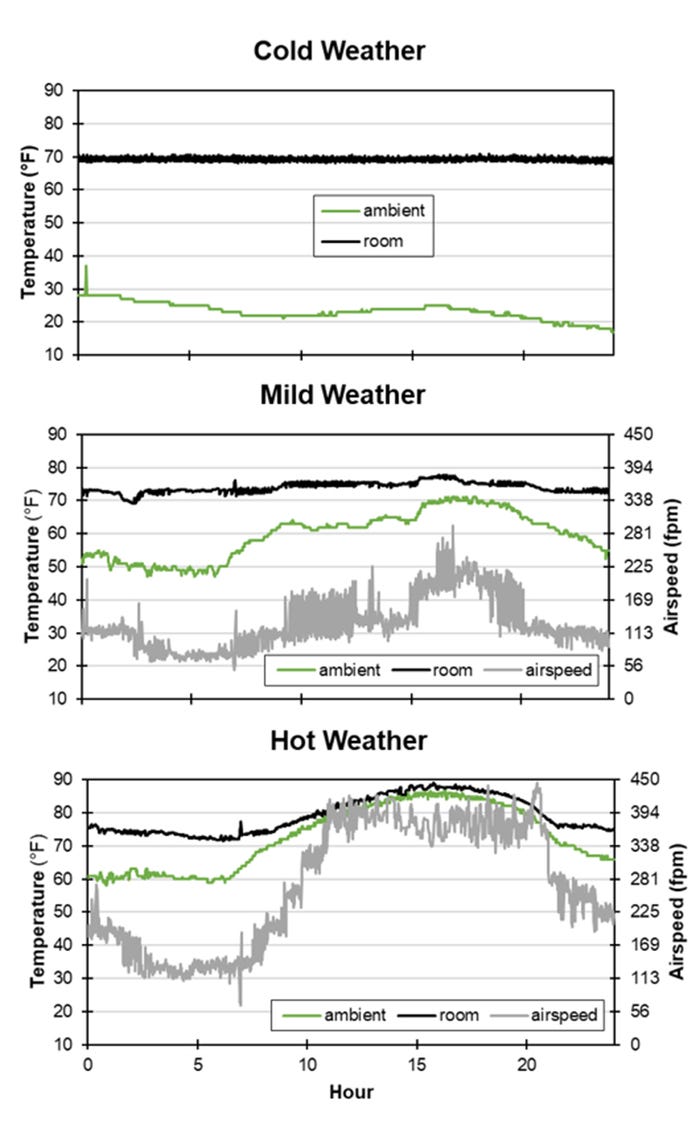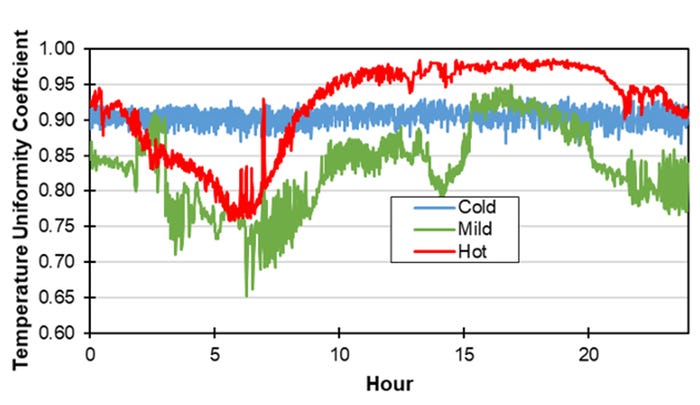Large and rapid temperature swings push the limits of hog building ventilation systems and their controllers to provide a stable and spatially uniform environment.
April 25, 2018

By Brett C. Ramirez, Steven J. Hoff and Jay D. Harmon, Iowa State University Department of Agricultural and Biosystems Engineering
In the Upper Midwest, last week seemed like winter, and now, this week feels like summer — nonetheless, this seemingly “short” spring season that is usually accompanied by mild weather can still serve as an important reminder to the challenges with transitional ventilation.
For many, mild weather signifies less LP usage and consequently, lower operating costs. However, there may be some underlying impacts on animal performance as ambient temperatures go from cold nighttime lows (often requiring minimum ventilation) to warm daytime highs (nearing maximum summertime ventilation). These large and rapid temperature swings push the limits of our ventilation systems and their controllers to provide a stable and spatially uniform environment. The goal of this column is to demonstrate to readers about the importance and challenges associated with mild weather ventilation compared to cold and hot weather examples.
Typical Meteorological Year 3 (Wilcox and Marion, 2008) hourly data (statistically representative of “normal” weather) were used for five different locations (Mankato, Minn.; Boone, Iowa; Jefferson City, Mo.; Grissom, Ind.; and Fayetteville, N.C.) to show the amount of days mild weather is encountered. We’ll define mild weather as having a high and low ambient temperature between 40 degrees F and 75 degrees F in one day. For the five locations, about 20% (Minnesota), 22% (Iowa), 19% (Missouri), 23% (Indiana) and 20% (North Carolina) of days in a year normally encounter mild weather. More interestingly, within those selected fraction of days, less than 5% (for all locations) have a less than 5 degrees F maximum temperature change within the day. Between 10% and 20% of those days, for all locations, have between a 5-degree F and 10-degree F maximum temperature change. A 10-degree F to 20-degree F maximum temperature change within the day was found for 61% (Minnesota), 60% (Iowa), 50% (Missouri), 53% (Indiana), and 40% (North Carolina) of the selected days. Lastly, a substantial 20 degrees F to 30 degrees F maximum temperature change within the day is common for 21% (Minnesota), 23% (Iowa), 24% (Missouri), 27% (Indiana), and 35% (North Carolina) of the selected mild weather days. This suggests that when the weather is mild, expect large and rapid temperature fluctuations anywhere between 10 degrees F to 30 degrees F within the day. A good ventilation system and controller can avoid those temperature swings from

Figure 1: Ambient and room temperature for cold, mild and hot weather scenarios for a power-tunnel, 1,200 head wean-finish room.
Let’s look at some example temperature data collected last year in a fully-mechanical, power-tunnel ventilated barn with about 1,200 wean-finish pigs for three scenarios (cold, mild and hot weather) to demonstrate the differences in indoor temperature range and stability. For the chosen cold weather day, the average room temperature was 69.3 degrees F with a standard deviation of 0.58 degrees F, and a minimum 67.8 degrees F and maximum 70.7 degrees F (2.9 degrees F difference). From the figure, temperature appears quite stable with a small daily fluctuation. For the mild weather day, the average room temperature was 74.0 degrees F with a standard deviation 1.56 degrees F, and a minimum 69.1 degrees F and maximum of 77.1 degrees F (8.6 degrees F difference). The room temperature is much more dynamic as the heaters are cycling on/off and inlets opening/closing. Lastly, for the hot weather day, the average room temperature was 79.9 degrees F with a standard deviation of 5.5 degrees F, and minimum of 71.6 degrees F and maximum of 89.2 degrees F (17.6 degrees F difference). As expected, the room temperature hovers around the set point (~62 degrees F) when ambient temperature was less than 62 degrees F, then as it got warmer, the ventilation system transitioned to full tunnel. While it may seem hot inside the room, the elevated airspeeds help keep the pigs cool.
Now, let’s look at the spatial temperature uniformity from the 22 temperature sensors distributed throughout the room. The room spatial uniformity coefficient relates the average difference in temperature between a location and the room average. It ranges from 1 (perfectly uniform) to negative infinity (increasingly non-uniform), with a 0.8 and above being acceptable. The cold day is consistently around an average of 0.9. This is reasonable because airflow is minimal, and the heaters are stirring air a bit. During the mild day, uniformity fluctuates throughout the day with a minimum at 0.65 and a maximum of 0.94. This is consistent with the temperature data above. Lastly, the hot day uniformity performs as expected with a decrease in uniformity nearing the transition between ceiling inlets and tunnel (air is mixed poorly) and then achieving a steady 0.97 during full tunnel (high airflow, consistent environment).

Figure 2: Room temperature spatial uniformity coefficient for cold, mild and hot weather scenarios for a power-tunnel, 1,200 head wean-finish room (22 sensors).
In conclusion, be sure to “unwinterize” all the equipment and make the transition to summer ventilation as seamless as possible and give the mild weather ventilation the best chance it has. That means, make sure any inlets that were locked or shut over winter are opened or put back to their normal setting. Also, be sure to uncover any covered fans. While mild weather ventilation management may seem fairly trivial and off the radar, it is consistently more difficult to manage compared to cold and hot weather.
You May Also Like



